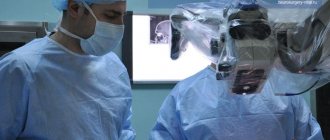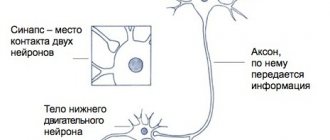Toxoplasmosis is a human disease caused by the microscopic single-celled parasite Toxoplasma gondii. It has a wide variety of clinical manifestations, mainly affecting:
- Nervous system.
- Eyes.
- Skeletal and cardiac muscles.
- Lymphatic system.
The pathogen is very common in nature; it is carried by several hundred species of animals and birds, including domestic ones. The parasite easily penetrates the body, but often does not lead to the development of an acute infection. The disease usually develops in people with a reduced immune response - patients with AIDS and other immunodeficiency conditions, when taking immunosuppressants.
Pathogens of the disease, its sources
The most dangerous is intrauterine infection, which often ends in miscarriage or severe congenital pathologies. For this reason, testing for toxoplasmosis must be carried out in preparation for pregnancy and bearing a child.
According to statistics, toxoplasma is found in 25-80% of the world's population. In some regions, the infection rate reaches 95%.
Toxoplasma is an intracellular parasitic organism that can exist in three forms:
- Tachyozoites. They have a crescent shape and a size of 2-4 microns. A characteristic feature is that with special staining (Romanovsky-Giemsa), the nucleus becomes red, and the cytoplasm becomes blue-gray. In this form, the parasite penetrates the cells of the immune system (macrophages, phagocytes), in which it quickly multiplies. After cell death, tachyozoites are released and infect healthy macrophages.
- Bradiozoites (pseudocysts). This is a protective form of Toxoplasma, in which most of the life activity of the pathogen occurs during a normal immune reaction on the part of the infected organism. The shape of the bradiozoite cell is elongated, the nucleus is displaced towards one of the ends. Toxoplasma in this form often forms tissue pseudocysts consisting of many parasitic cells covered with a common protective membrane.
- Oocysts. This form of Toxoplasma is found only in the intestinal epithelial cells of the domestic cat and its wild relatives. Formed as a result of sexual reproduction of the parasite inside the cells of the animal. The immature oocysts are then released into the environment in feces. Given sufficient temperature and an influx of fresh oxygen, the oocysts mature within 2-7 days. After maturation is completed, oocysts become capable of infecting intermediate hosts of Toxoplasma, including humans.
The main source of infection is representatives of the cat family, the overwhelming majority being domestic cats. The mechanism of transmission of the parasite is fecal-oral. Implemented through:
- Consumption of insufficiently thermally processed meat products (especially pork and lamb).
- Through poorly washed vegetables, herbs, fruits.
- Failure to comply with personal hygiene rules (unwashed hands).
Rarely, direct infection with Toxoplasma through microdamage to the skin is possible. The parasite is rarely transmitted from mother to child. On average, one infection per 2-3.5 thousand pregnant women. It is most likely that the fetus will become infected with Toxoplasma if during pregnancy the pregnant woman’s body encounters the parasite for the first time.
Susceptibility to Toxoplasma is extremely high; single oocysts are sufficient for infection. Young people are most susceptible; in older people (after 60 years), the parasite is detected much less frequently.
Features and causes of the disease
The causative agent of toxoplasmosis is a single-celled parasite that lives in cells and intercellular space. In addition to the human body, it can penetrate into the bodies of many animals and birds, but to complete its full development path it needs the intestines of a domestic cat or other representatives of the cat family. Typically, a cat becomes infected by eating infected rodents or pigeons, after which Toxoplasma passes through its intestines and enters the human body through contact with cat feces.
Humans are an intermediate carrier for Toxoplasma. After entering the body, Toxoplasma penetrates the tissues, enters the blood through the lymph nodes and penetrates through the bloodstream into various organs, including the brain and organs of vision. Typically, infection occurs:
- when entering the digestive system after contact with soil contaminated with the feces of an infected animal, when eating unwashed fruits or vegetables, when meat is not properly cooked, etc.;
- transmissibly, through direct contact with the blood or saliva of an infected animal, in the presence of small wounds, scratches or abrasions on the skin;
- vertically, from the infected mother to the fetus, if the woman became infected during pregnancy.
The main measure to prevent toxoplasmosis is to eliminate the risk of the parasite entering the body. Good hygiene is most important in families with pets, especially cats. If the animal is free-ranging, precautions are especially important: wash your hands thoroughly after each contact, do not allow it to climb on the dining table or kitchen table, do not bring the animal to your face, and do not allow it to sleep in your bed. The risk of infection also remains if the cat does not go outside for walks: toxoplasma cysts can enter the house on the soles of outdoor shoes.
Acquired toxoplasmosis, symptoms
The majority of those infected have no obvious clinical symptoms; the disease immediately enters the latent carrier phase. The incubation period ranges from 1 to 3 weeks.
When a pronounced clinical picture appears, the symptoms increase slowly. Usually the disease begins asymptomatically with enlargement of regional lymph nodes (inguinal, axillary, cervical). Lymph nodes are elastic, painless, patients do not show any complaints during this period.
Then the body temperature rises to 38-39 degrees, headaches appear, and symptoms of acute gastroenteritis develop. In particularly severe cases of toxoplasmosis, fever begins suddenly, and body temperature can rise to 40 degrees or more. Intense sweating, severe intoxication, abdominal pain and macular rash are observed.
After the first week of development of the infectious process, the spleen and liver become enlarged. Aching pain may occur in large muscle groups of the lower and upper extremities. Every fifth person develops chorioretinitis during this period, which manifests itself in loss of areas of the visual field.
Starting from the second week, the symptoms of gastrointestinal tract damage begin to fade. Symptoms of enteritis decrease and quickly disappear, and overall intoxication of the body decreases. At the same time, the lesion develops:
- Musculoskeletal system. Pain in the limbs and joints increases, and mobility and fine motor skills may be impaired.
- Reticuloendothelial. Manifests itself as hepatolienal syndrome, mesadenitis.
- Cardiovascular. Heart rhythm disturbances and symptoms of myocarditis or pericarditis often develop.
At 3-4 weeks, the disease ends with the attenuation of all manifestations and the transition of toxoplasmosis to asymptomatic carriage. When exposed to negative factors that weaken the immune system, the disease may manifest with the development of the above-described clinical picture, which again enters the latent phase.
Frequent relapses of acute toxoplasmosis, especially against the background of immunosuppressive factors, can lead to serious complications. More common:
- Myocardial dystrophy.
- Psychoneurological pathologies.
- Decrease in intelligence.
- Atrophy of the optic nerve up to complete blindness.
- Chronic fatigue syndrome.
Acute toxoplasmosis in women can lead to menstrual irregularities, miscarriages and other pathologies of the reproductive system.
Chronic acquired toxoplasmosis is a fairly rare phenomenon and is considered an AIDS-associated form of the disease. It occurs with periodic exacerbations; complications from the central nervous system often develop in the form of encephalitis and damage to the visual organs.
The most severe consequence of chronic toxoplasmosis is a generalized infection during which multiple organ failure quickly develops, sometimes this complication ends in the death of the patient.
Manifestations of parasitic infection
The duration of the incubation period from the moment of penetration of Toxoplasma into the body until the appearance of the first symptoms of toxoplasmosis varies from several days to three weeks. The disease can occur in acute, latent or chronic form.
- Acute toxoplasmosis begins with a sudden increase in temperature, fever, and manifestations of intoxication (chills, pain in muscles and joints, loss of appetite). The spleen and liver increase in size, the lymph nodes swell, and pink rashes may appear on the skin, distributed throughout the body. The disease may be accompanied by an inflammatory process in the myocardium, tissues and membranes of the brain. In severe cases of the disease, death cannot be ruled out.
- The chronic form of the disease is either asymptomatic or with inexpressive symptoms: the patient quickly gets tired, feels weak and generally weak, and may have a slight increase in temperature. If Toxoplasma penetrates the nervous tissue, brain or organs of vision, headaches, dizziness, blurred vision and memory are possible. If internal organs are damaged, myocarditis, hepatitis or pneumonia may develop. As a rule, the disease continues for many years with periodic exacerbations.
- The latent form is typical for the vast majority of people and occurs in 95-98% of cases of infection. Two to three weeks after the parasite enters the body, a person feels a slight malaise, which soon goes away on its own. The presence of toxoplasma is usually detected during the treatment of other diseases.
The disease can be acquired or congenital. Toxoplasmosis is most dangerous during pregnancy, since the parasite, penetrating the fetal tissues, disrupts their natural development. The result of infection can be a wide range of pathologies, from spontaneous abortion to various birth defects in the child, affecting the organs of vision, brain and spinal cord.
With intrauterine infection, the fetus develops irreversible changes that can appear immediately or after several years. Often children with a congenital disease lag behind their peers in development; they develop pathologies of the organs of vision and hearing, microcephaly, mental retardation and other disorders. However, negative manifestations are possible only when a woman becomes infected while carrying a child. If pregnancy occurs in a woman with a latent or chronic form of the disease, the child is protected by antibodies, which by that time have already been formed in the mother’s body.
Are you experiencing symptoms of toxoplasmosis?
Only a doctor can accurately diagnose the disease. Don't delay your consultation - call
Congenital toxoplasmosis occurring during pregnancy
Occurs when the parasite penetrates the placental barrier and infects the fetus. In most cases, it occurs during primary infection during pregnancy, less often - during relapse of toxoplasmosis associated with decreased immunity. The main risk group is women who were not infected with toxoplasma before pregnancy. If, as a result of contact with the pathogen, the disease manifests itself during pregnancy, the likelihood of developing congenital toxoplasmosis is quite high.
The survival rate of children with intrauterine infection depends on the period at which it occurred:
- If infected in the first trimester, the chance of fetal survival is 15%
- On the second – 30%.
- On the third – 60%
Even if pregnancy is successfully completed, an extremely high degree of development of congenital pathologies and congenital toxoplasmosis remains. The disease is severe, especially if infection occurs in the early stages. A characteristic tetrad of pathologies develops:
- Hydrocephalus.
- Bilateral retinochoroiditis.
- Delayed psychophysical development.
- Cerebral calcifications.
The prognosis for congenital toxoplasmosis is unfavorable; in most cases, the disease ends in the death of the newborn or severe disability. Even if, after intrauterine infection, an acute clinical picture does not arise, such children are at risk of developing:
- Mental deficiency.
- Epilepsy.
It is possible to develop many other pathologies that appear months and years after birth. For this reason, an acute form of toxoplasmosis that occurs during pregnancy is an indication for abortion even in the later stages. During pregnancy, it is necessary to undergo a lot of tests that help identify the presence of not only toxoplasmosis, but also CMV infection.
The causative agent of toxoplasmosis
The causative agent of the disease is Toxoplasma gondii. This is the protozoan of the order Coccidia. It is mobile and has an arched shape. If you look at this living organism under a microscope, it resembles an orange slice.
The parasite can reproduce sexually and asexually. As a result of the sexual process occurring in the intestines, cysts are formed. These forms are very resistant to environmental factors: they are not afraid of low and high temperatures or drying. Together with feces, these cysts are released and lead to infection of other organisms. Asexual reproduction does not lead to the formation of persistent forms of the parasite.
Can you get toxoplasmosis from pets? Yes, because toxoplasmosis affects about 60 species of birds and 300 species of mammals (domesticated and wild). However, the sexual process occurs only in the intestines of felines. During 2 weeks of illness, a cat can secrete up to 2 billion cysts, which live in the external environment for up to 2 years.
Indications for examination
Analysis is most often prescribed in two cases:
- When planning pregnancy as part of a standard laboratory diagnostic package for TORCH infection.
- If you suspect toxoplasmosis and have certain symptoms.
Laboratory diagnostics are also used to identify symptoms of acute toxoplasmosis in adults or children.
In general medical practice, this test is prescribed if patients exhibit specific symptoms (visual impairment, seizures), as well as for HIV-infected patients.
Treatment of cerebral toxoplasmosis
The doctor prescribes individual treatment for Toxoplasma gondii to patients with acute brain pathology, HIV-infected people, children and pregnant women. To treat brain disease, antihistamines (Tavegil, Suprastin), antibiotics (Rovamycin, Lincomycin hydrochloride), and chemotherapeutic drugs (Fansidar, Delagil) are used. It is necessary to use a general strengthening complex of vitamins.
Traditional medicine cannot completely replace traditional therapy, but patients confirm the effectiveness of some of its methods. It is recommended to use the following traditional methods of treating Toxoplasma gondii, after consulting with a doctor:
- use a decoction of milk and garlic cloves;
- drink settled tea from wormwood, chamomile, gentian, tansy, buckthorn bark;
- take crushed pumpkin seeds soaked in milk;
- eat grated horseradish root mixed with sour cream;
- drink propolis tincture.
Differential diagnosis
It is carried out with diseases whose symptoms are similar to acute and chronic forms of toxoplasma infection. These include:
- Infectious mononuclease.
- Mycoplasmosis.
- Chlamydia.
- Cytomegaly.
- Tuberculosis.
It is also necessary to exclude oncological pathologies and systemic diseases (rheumatism, lymphogranulomatosis). The final diagnosis is established after receiving the results of specific serological tests and PCR. There are many laboratory methods for detecting specific antibodies to Toxoplasma. These include:
- ELISA. Linked immunosorbent assay.
- RNIF. Indirect immunofluorescence reaction. Becomes positive from the first week of the disease. High antibody titers can last up to 15 years.
- RSK. Complement fixation reaction. It becomes positive from the 10-14th day of disease development and persists for 2-3 years.
Brain toxoplasmosis (CBT; cerebral toxoplasmosis) is the leading cause of central nervous system (CNS) damage in patients with human immunodeficiency virus (HIV) infection. THM has a high mortality rate, which is usually associated with difficulties in clinical diagnosis. In recent years, there has been a growing number of late-diagnosed HIV patients who, unaware of their HIV infection, live to develop severe secondary/opportunistic lesions. Such patients end up in various hospitals, where they can remain for quite a long time without adequate treatment, and only after their HIV status is established are they transferred to specialized departments. As a rule, it can be difficult to assume one or another secondary disease without knowing the characteristics of its course during HIV infection. This applies to most secondary lesions, in particular to THM, which is the main cause of CNS damage in patients in the later stages of HIV infection. Currently, the criteria for laboratory confirmation of this diagnosis in patients with HIV infection are quite clearly established, which include the detection of high titers of IgG to Toxoplasma gondii
in blood serum, Toxoplasma DNA in cerebrospinal fluid (CSF). Detection of lesions in the central nervous system during magnetic resonance imaging (MRI) is also of great importance for the diagnosis of this process.
Materials and methods
The clinical picture of the disease was studied in 207 patients (145 men, 62 women) with HIV infection (stage 4B) and THM aged 18-76 years. The diagnosis of toxoplasmosis in all patients was established on the basis of clinical data and confirmed by the presence of IgG to T. gondii
in high and medium concentrations in blood serum (70%).
T. gondii
were determined in CSF and blood serum using an indirect immunofluorescence reaction and enzyme-linked immunosorbent assay (Toxoplastrip M, Toxoplastrip G and Toxoplastrip test systems produced by the Federal State Budgetary Institution N.F. Gamaleya Research Institute of Epidemiology and Epidemiology, Ministry of Health of the Russian Federation), DNA
T. gondii
in the cerebrospinal fluid (in 42.5%), molecular biological methods based on polymerase chain reaction to determine the DNA of
T. gondii, Mycobacterium tuberculosis
Candida
fungi in liquor using the AmpliSens test systems produced by the Central Research Institute of Epidemiology. Specific antibodies of the IgM class in the blood serum were detected in 6 (3.3%) patients.
MRI of the brain was performed in 115 (55.5%) patients at the MRI diagnostic center of City Clinical Hospital No. 36 of Moscow on a low-field magnetic resonance tomograph "Obraz-1" (Russia) with a magnetic field voltage of 0.12 T. In dynamics during treatment, this The study was carried out in 74 (65%) patients.
Results and discussion
We have described the clinical course of the disease in these patients quite fully previously [1]. Let's add just a few important details. It is known that in most patients this lesion develops gradually with an increase in symptoms over several weeks and even months. In our study, this “classic” onset of the disease was present in 163 (78.7%) patients, and an acute onset, literally against the background of “full health” (according to the patients themselves and their relatives) - in 44 (21.3%), which is 2 times more often than in isolated foreign observations [2]. Such patients initially often ended up in neurology or intensive care departments with diagnoses of “acute cerebrovascular accident”, “cerebral edema”, “brain tumor”. At the same time, 30% of patients did not know before hospitalization that they were infected with HIV, and approximately 50% never contacted doctors, although some of them were registered at the AIDS center.
It is important for clinicians to know that such an important sign of central nervous system damage as headache was present in only 55% of patients; a rise in body temperature to high levels (above 38 °C) was also recorded in only 50% of patients. 93% of patients had low immunity parameters - the number of CD4 lymphocytes in 66.2% was less than 50 in 1 μl, in another 26.8% of patients - from 50 to 200 in 1 μl. At the same time, in 14 (7%) patients the number of CD4 lymphocytes exceeded 200 in 1 μl, and in 1 of them it was 720 in 1 μl. The reason for the development of THM in a patient with HIV infection with a normal count of CD4 lymphocytes may be related to the functional deficiency of helper T lymphocytes. There are known cases of the development of THM in persons without HIV infection, with normal immunity indicators [3]. It should be noted that in 9.2% of patients, THM occurred as a generalized process, combined with damage to other organs (usually the heart, liver, eyes, lungs), and 54% of patients had other secondary infections (CMV infection, esophageal candidiasis , Pneumocystis pneumonia, pulmonary and generalized tuberculosis, bacterial pneumonia, etc.).
MRI of the brain revealed pathological changes in 113 (98.3%) patients during hospitalization. Most often, tomograms revealed polymorphic foci of increased MR signal in T2-weighted and FLAR modes and decreased in T1 mode with lesions predominantly in the white matter or at the border of the white and gray matter of the brain. The formation of perifocal edema was often recorded around the lesions. When using intravenous contrast with gadolinium preparations, these lesions accumulated a contrast agent along the periphery, similar to the targets. It should be noted that the formation of focal lesions of the central nervous system is the most characteristic sign of toxoplasmosis lesions, although in some patients diffuse encephalitis is detected rather than focal; In such patients, the disease is thought to progress rapidly to death [4]. We observed diffuse damage to the brain substance in 3 (2.7%) patients; Indeed, one of them died in the early stages of hospitalization, but the other two were discharged after successful treatment. In 86 (76.1%) patients, multiple lesions (3 or more) were detected.
Here is a clinical example.
Patient S.
, 34 years old, was admitted with complaints of weakness, low-grade fever, unsteadiness of gait, speech impairment.
Over the course of 2 months, I lost 15 kg, fever reached 37.5 °C, “viscosity” of speech appeared and increased, and staggering when walking. During hospitalization, antibodies to HIV were detected for the first time. MRI revealed multiple lesions (in the cerebral hemispheres, hemispheres and vermis of the cerebellum, cerebral peduncles; Fig. 1
).
Figure 1. MRI data of the brain upon admission of patient S. Multiple lesions in the cerebral hemisphere, in the right hemisphere of the cerebellum, in the left middle cerebellar peduncle of an inflammatory nature, ranging in size from 8 to 22 mm with perifocal edema. Analysis of CSF without pathology.
High titer
IgG to T.gondii Despite treatment (Biseptol, dexamethasone), negative dynamics were observed in the first 2 weeks - the patient was lethargic and lethargic; answered simple questions in monosyllables. Dysarthria was pronounced, he quickly became exhausted, stopped getting up and eating on his own. Ptosis of the right eyelid and hyperkinesia in the left extremities developed. In the immune status, the number of CD4 cells is 28 in 1 μl, HIV RNA in the blood is more than 3 million copies/ml. Subsequently, in connection with the detection of manifest CMV infection, cymevene was added to treatment and antiretroviral therapy was prescribed. Over the course of 1.5 months, there was a slow clinical improvement; on the 52nd day of hospitalization, the patient was discharged with positive dynamics and an MRI of the brain (Fig. 2)
. Figure 2. MRI of the brain of patient S. after 4 weeks of treatment. There is a decrease in the number and size of lesions, and the absence of a zone of edema around them.
In 24 (21.2%) patients, single (1-2) areas of increased signal were detected (Fig. 3)
.
Figure 3. MRI of the brain of a patient with HIV infection and TBI.
A lesion in the left temporoparietal region with pronounced perifocal edema and compression of the left ventricle. In 2 (1.7%) patients, no pathological changes were detected on MRI of the brain during the first study. Subsequently, one of them died, and THM was established at autopsy, and in the second patient, during a repeated study against the background of etiotropic treatment, cysts were found in the brain substance (specific IgG was detected in the blood serum and CMSF, as well as DNA to Toxoplasma in CMSF).
The lesions were most often located in both hemispheres - in 71.7% of patients. Unilateral lesions were present in 28.3% of patients. The contours of the lesions were clear (40.7%) or unclear (59.3%). Swelling around the lesions was observed in 69% of patients.
Most often, lesions were localized in the frontal and parietal lobes (70.8 and 61.1%, respectively). In the table
the localization of lesions on the MRI image during hospitalization of patients is presented.
In 44.2% of patients, in addition to the white matter, the subcortical nuclei were also affected. The corpus callosum was rarely affected; lesions were detected in it only in 8 (7.1%) patients.
The lesions were located periventricularly in almost ¼ of the patients. Single lesions were more often located in the frontal (in 6 patients), parietal (in 5), occipital (in 6) lobes and the thalamus (in 5).
When trying to detect a relationship between the number of lesions on MRI and the duration of the process, we did not obtain a statistically significant relationship between these variables.
With an acute onset of the disease, the lesions were located in one of the hemispheres in 45% of cases, whereas with a gradual onset - only in 24.7%. Thus, damage to both hemispheres was more often observed with a gradual onset (75.3%), and with an acute onset - in 55%. In addition, with an acute onset of the disease, a single lesion was identified in 30% of cases, whereas with a gradual onset, single lesions were found in 19% of patients. But these differences also turned out to be statistically insignificant.
Equally often, with acute and gradual onset, the frontal, parietal, occipital lobes, pons, corpus callosum and cerebral peduncles are affected.
The thalamus (25 and 34.4%), temporal lobes (30 and 41.9%) and cerebellum (15 and 23.7%) were affected somewhat less frequently during the acute onset of the disease. With an acute onset of the disease, the nuclei (30%) and periventricular zones (10%) were significantly less often affected, in contrast to those with a gradual onset - 47.3 and 28%, respectively. However, swelling around the lesions was more often present with an acute onset of the disease (80%) than with a gradual onset (66.7%). This led to a more severe course of the disease and a higher incidence of deaths - 47.7% with an acute onset of the disease, as opposed to 30.1% with a gradual onset.
During treatment (after 4-6 weeks), MRI of the brain was performed in 74 patients. In 64 (86.5%) patients, significant positive dynamics were observed: a decrease in the number and size of foci, the area of edema around them, and in 29 patients, foci of inflammation were transformed into cysts as a favorable outcome of necrotizing encephalitis. Complete resolution of the lesions occurred in only 7% of patients. In 4% of patients, no improvement was found during the control study. In 1 of them, an early relapse developed within 1 month after discharge, and the patient died. In 2 other patients, positive dynamics were clinically noted in the form of a decrease in neurological symptoms. In 2 patients, control MRI showed negative dynamics. One of them underwent neurosurgical intervention due to a suspected brain tumor, and the patient subsequently died in the absence of etiotropic treatment; the second patient also died despite treatment.
The MRI picture in a number of patients who were examined several months after discharge reflected glial and scar-atrophic changes in the brain substance, which indicates positive dynamics during treatment.
Conclusion
To summarize this study, it should be emphasized that visualization of the pathological process in THM undoubtedly has great diagnostic value, especially when making a differential diagnosis with other lesions of the central nervous system or the impossibility of conducting adequate laboratory tests (or their indeterminate results). It is important to remember that this process is characterized by the simultaneous detection of several lesions. However, with the acute onset of the disease, single lesions and a one-sided process are more often observed, while swelling around the lesions often develops, which leads to a more severe course of the disease and a higher frequency of deaths. Carrying out studies over time is important for monitoring treatment and outcomes. MRI is of great importance in intensive care units, neurology or neurosurgery, where patients with THM are often hospitalized (especially in the acute onset of the disease), which is “hidden” under the guise of an acute cerebrovascular accident or brain tumor.
Material for research
To detect specific antibodies to Toxoplasma, blood is drawn from a vein; the procedure does not require any special preparation. Any biological material is suitable for carrying out a PCR reaction - blood, saliva, tissue samples, other biological fluids (cerebrospinal fluid, urine).
If there is a need to diagnose toxoplasmosis in the fetus, blood sampling from the umbilical cord is possible. The procedure is rarely prescribed because it is associated with a high risk of complications and premature termination of pregnancy. A more gentle method is to take amniotic fluid for analysis by puncture. These methods are used when the results of specific tests on a pregnant woman with suspected toxoplasmosis do not provide sufficient clarity of the diagnosis.
Indications for the use of various laboratory tests and features of interpretation of results in different categories of subjects
Depending on the category of the patient (age group, risk group), the use of different sets of diagnostic techniques is indicated. The correct choice of diagnostic methods is especially important in cases of suspected toxoplasmosis in pregnant women.
How to get rid
The treatment method for toxoplasmosis is selected depending on the form and course of the disease, as well as the presence of damage to internal organs. As a rule, the patient is prescribed antiparasitic drugs - most often chloridine, which is combined with sulfonamide drugs that enhance its effect. During pregnancy, spiramycin is often prescribed.
Usually the drugs are taken in three courses lasting from 5 to 10 days, repeated at weekly intervals. To eliminate the cause of toxoplasmosis in the chronic form, these drugs are not enough; additional immunotherapy is necessary using intradermal injections of toxoplasmin. At the same time, anti-allergy medications, courses of vitamins and immune stimulants are prescribed.
If the brain, visual organs and internal organs are damaged, appropriate therapy is prescribed.
Screening for toxoplasmosis during pregnancy
If during pregnancy a pregnant woman develops symptoms that may indicate the development of acute toxoplasmosis, it is necessary to establish the level of specific immunoglobulins using serological methods.
The enzyme-linked immunosorbent assay (ELISA) is best suited to detect the acute stage of the disease. It most accurately shows the concentration of IgM, an increase in the level of which indicates ongoing or recently present acute toxoplasmosis.
Determining IgG levels is less informative since these antibodies persist long after infection and indicate carriage rather than recent infection or exacerbation. Women who have been infected with toxoplasma before pregnancy are insured against infection of the fetus and are not at risk.
It is also important to obtain an immunological picture over time, for which specific tests are carried out at least once every 2 weeks. Studying the dynamics of changes in antibody titers allows us to establish a diagnosis with greater accuracy.
It should be taken into account that the serological picture indicating infection with Toxoplasma is not a 100% indication for termination of pregnancy. In this case, additional tests will be required by taking fetal blood from the umbilical cord and samples of amniotic fluid by puncture.
Diagnosis of cerebral toxoplasmosis
The clinical picture of the disease is very vague, so it is almost impossible to identify cerebral toxoplasmosis based only on the patient’s complaints and given the absence of pronounced symptoms of the disease. X-rays of the skull of the head, an electrocardiogram, serological tests, and allergy tests help determine toxoplasmosis of the brain.
An effective method for diagnosing brain disease is enzyme immunoassay. Blood is taken from the patient, in which iGg and iMg antibodies are detected. The presence of iGg indicates that the patient is recovering or the infection has become chronic, and iMg indicates a recent infection with toxoplasmosis with an acute course of the disease. A negative iMg test in most cases indicates the absence of infection.
- Plum compote for the winter without sterilization: recipes for preparations
- How to get rid of subcutaneous acne on the face quickly
- Beef salad: delicious recipes
Examination of newborns and young children
Aimed at early detection of the pathogen, before the onset of the acute phase of congenital toxoplasmosis and the development of severe complications. Prescribed when there is a suspicion of Toxoplasma infection, includes the following tests:
- Isolation of the parasite by inoculating material from the placenta and umbilical cord into living mice.
- Carrying out PCR analysis of amniotic and lumbar fluids.
- Computed tomography or MRI of the head. Allows you to identify specific changes in the brain, for example, hydrocephalus, at an early stage.
Serological techniques are also used, but they provide only additional information. The newborn’s immune system is not active enough and is often unable to produce a sufficiently high titer of specific antibodies.
Consequences of toxoplasmosis
The most life-threatening and severe consequences for the patient’s health with toxoplasmosis are observed with the congenital genesis of the disease. Often, infection of a pregnant woman with Toxoplasma in the initial period of pregnancy becomes the cause of antenatal mortality. Congenital toxoplasmosis is characterized by the development of pathomorphological changes, primarily in the brain, manifested by necrotizing encephalitis. Due to the fact that toxoplasma infection is prone to hematogenous and lymphogenous generalized spread, pathological changes and complications of the disease can be projected in almost any part of the human body.
A tendency to a complicated course of toxoplasmosis is observed in individuals suffering from one or another form of immunodeficiency, and is due to the activation and attachment of a secondary bacterial component. This course of toxoplasmosis most often occurs in a specific category of HIV-infected patients who develop a severe chronic form of the disease that requires prolonged drug correction.
In relatively healthy individuals, toxoplasmosis does not cause severe consequences and even occurs in a latent asymptomatic form. After an active or asymptomatic clinical period, persistent immune defense mechanisms are formed in the human body, preventing the likelihood of re-infection with Toxoplasma, which is especially important for women planning to have a child.
Examination of patients with HIV infection
Diagnosis consists of regular monitoring of immunoglobulin G titers using serological methods. Titration of immunoglobulin M is not informative since in most HIV-positive people the level of antibodies of this group is extremely variable.
Direct detection of the pathogen by microscopy of tissue samples or infection of laboratory animals is usually not necessary. The diagnosis can be established quite accurately through serological diagnosis and the presence of a specific clinical picture of toxoplasmosis. In HIV-positive patients it is more pronounced, which greatly simplifies the diagnosis.
Examination in Medart
At the Medart Medical Center, a full range of serological tests are performed to detect toxoplasma in the patient’s body. An immunological test to identify specific immunoglobulins is part of comprehensive STD tests intended for couples planning to have a child. It is possible to take blood and other biological fluids to determine the presence of toxoplasma and clarify the clinical picture of the disease.
High-precision modern equipment allows you to obtain accurate research results in the shortest possible time.
Advantages of Medart Medical Center:
- Qualified specialists.
- The ability to quickly obtain accurate research results.
- Affordable price.
The medical center provides a full range of services, from preliminary appointments and consultations to establishing and clarifying the diagnosis and prescribing effective treatment regimens and prevention of toxoplasmosis and other diseases.








